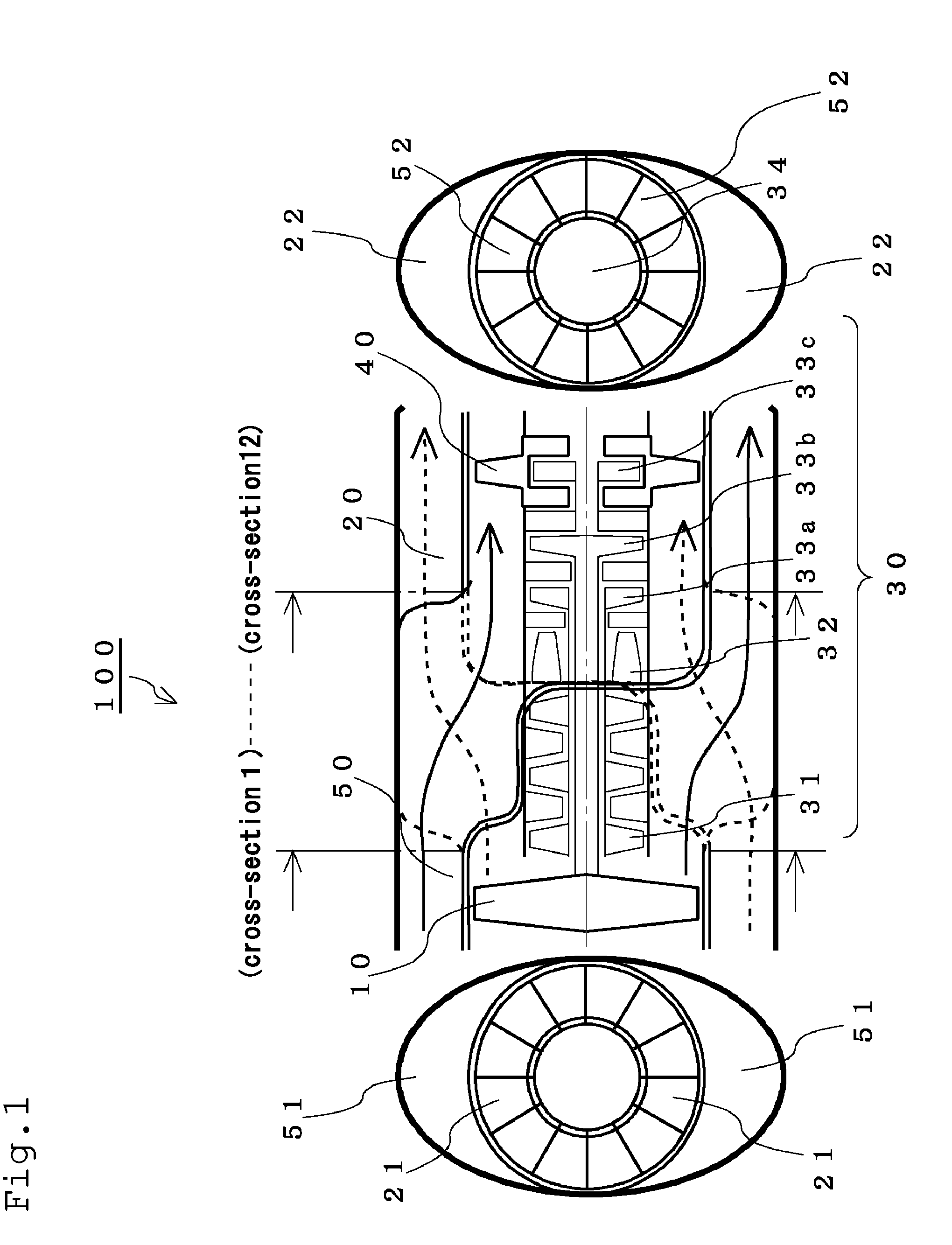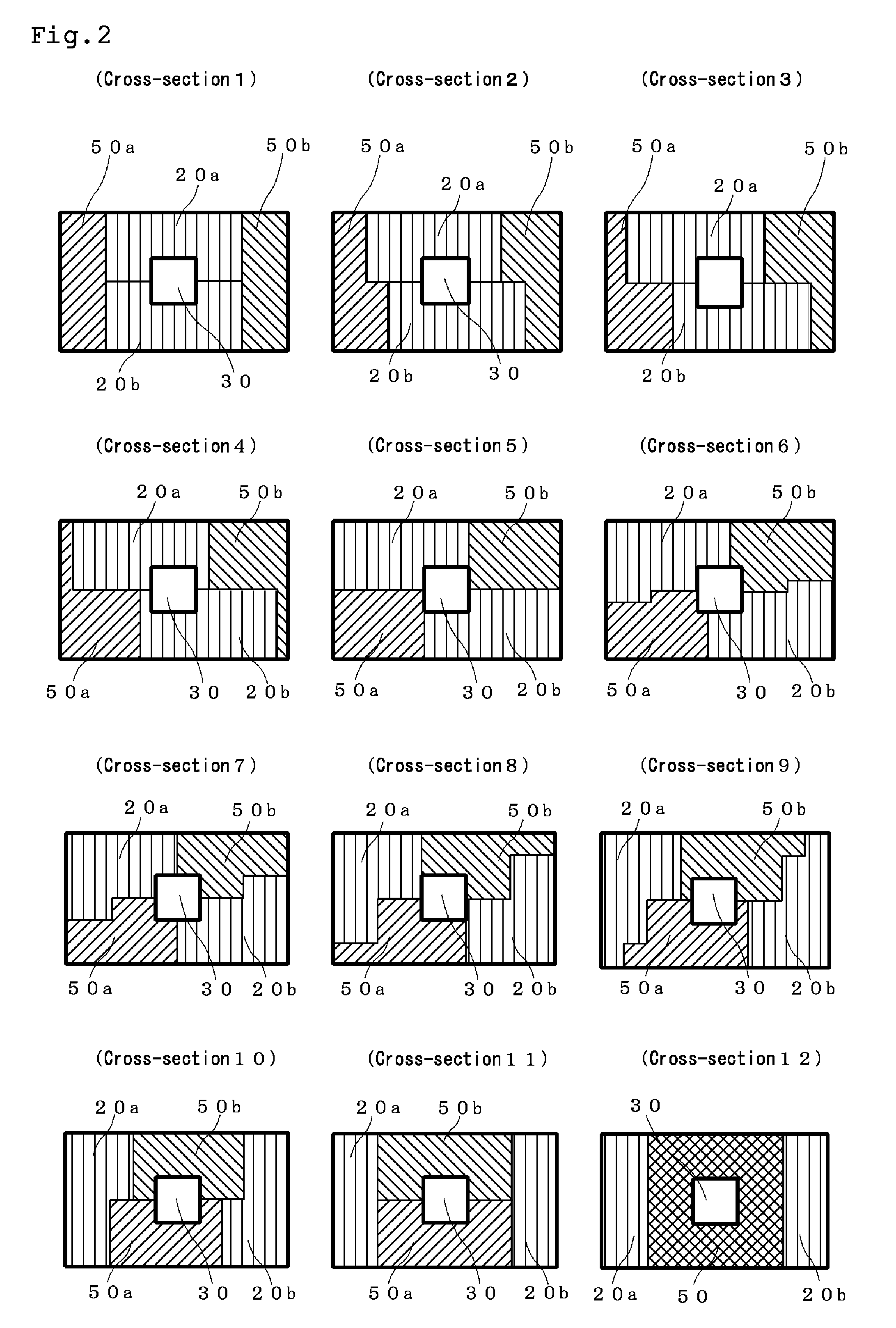High bypass-ratio turbofan jet engine
a turbofan and high bypass ratio technology, applied in liquid fuel engines, machines/engines, combustion air/fuel air treatment, etc., can solve the problems of large fan diameter, large fan, and high bypass ratio, and achieve high bypass ratio turbofan, reduce air resistance acting on the engine, and increase the bypass ratio without increasing the fan diameter
- Summary
- Abstract
- Description
- Claims
- Application Information
AI Technical Summary
Benefits of technology
Problems solved by technology
Method used
Image
Examples
embodiment 1
[0026]FIG. 1 is an explanatory diagram showing a turbofan jet engine 100 according to Embodiment 1 of the present invention. For the convenience of explanation, the turbofan jet engine 100 is illustrated in the shape of a vertically long ellipse, but this engine is actually in the shape of a horizontally long ellipse.
[0027]This turbofan jet engine 100 has: a core engine 30 constituted by a compressor 31, a combustor 32, turbines 33 and an exhaust nozzle 34; a front fan 10 which is positioned upstream of the core engine; a front fan duct 20 which leads air compressed by the front fan 10 but bypassing the core engine to the outside; and aft fan 40 which is positioned downstream of the core engine; and an aft fan duct 50 which introduces the air into the aft fan 40.
[0028]Although described in detail later with reference to FIG. 2, the front fan duct 20 and the aft fan duct 50 are disposed along the core engine 30 such as to change the cross-sectional shapes of the front fan duct 20 and...
embodiment 2
[0042]FIG. 4 is an explanatory diagram showing a turbofan jet engine 200 according to Embodiment 2.
[0043]This entire turbofan jet engine 200 is embedded in a main wing. Also, when viewing the aircraft from front, the air intake 21 of the front fan 10 and the air intake 51 of the aft fan 40 are independently provided away from each other.
[0044]FIG. 5 is an explanatory diagram showing an example of how the cross-sectional shapes of the front fan duct 20 and of aft fan duct 50 of Embodiment 2 change.
[0045]As with the case of Embodiment 1, as viewed from the upstream side, the front fan duct 20 and aft fan duct 50 change their positions, shapes and size gradually in a counterclockwise direction around the core engine 30 by moving toward the downstream side. Note that the sum of the cross-sectional area of the front fan duct 20 and the cross-sectional area of the aft fan duct 50 may be constant as in Embodiment 1, or may be changed without having these ducts protrude from the main wing. ...
PUM
 Login to View More
Login to View More Abstract
Description
Claims
Application Information
 Login to View More
Login to View More - R&D
- Intellectual Property
- Life Sciences
- Materials
- Tech Scout
- Unparalleled Data Quality
- Higher Quality Content
- 60% Fewer Hallucinations
Browse by: Latest US Patents, China's latest patents, Technical Efficacy Thesaurus, Application Domain, Technology Topic, Popular Technical Reports.
© 2025 PatSnap. All rights reserved.Legal|Privacy policy|Modern Slavery Act Transparency Statement|Sitemap|About US| Contact US: help@patsnap.com



